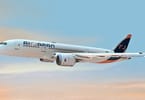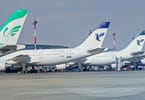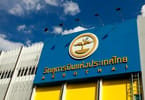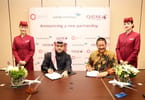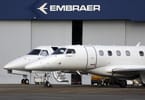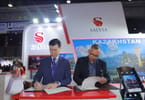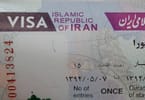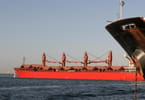WASHINGTON – With gasoline prices up, highways snarled, and tarmacs congested, America is going back to basics – or taking a sentimental journey – to passenger rail.
Amtrak spokesman Clifford Black says that Amtrak is enjoying record ridership and that the number of passengers has gone up every year during the last five years.
“Now is a good time to be in the passenger rail business,” he said this week. “Travelers are looking for alternatives to highways and air, obviously, because of the rising cost of fuel for cars and jet fuel for airplanes. People are discovering passenger rail; in the past year, we had an all-time record of 25.8 million people in fiscal year 2007. That was the fifth straight record year.
“And estimates for (this) July, we will see a 14-percent increase this year over July last year. Lawmakers and decision-makers and passengers are looking for alternatives to flying or driving, and many folks are looking at Amtrak.”
Well positioned in the national debate about the funding of Amtrak is U.S. Rep. John W. Olver, D-Amherst, chairman of the House Appropriations’ subcommittee on transportation, housing and urban development.
“Amtrak is limping its way out of the Bush presidency,” he told The Republican. “This administration has done everything it can to cut it down. But the stars are aligning for rail: high energy prices coupled with a rising awareness of the dangers of climate change have generated record levels of ridership and increased support in Congress.”
A fair-minded appropriator, often scientific in the way he shapes policy based on public need, demand, and funding priorities, Olver is an avid environmentalist.
He knows that on a passenger-miles basis, Amtrak is 17 percent more energy-efficient than air travel and 21 percent more than cars in terms of reduction in greenhouse gas emissions.
As subcommittee chairman, Olver began reversing the GOP trend to cut Amtrak spending, and has added $1.2 billion above the Bush administration’s funding request for Amtrak during his two-year tenure as chair.
“He has been instrumental in heading up the discussion for expansion for the national passenger rail system,” Black said. “He is a key player. He is very perceptive. He is a great champion of passenger rail.”
David Johnson, assistant director of the National Association of Railway Passengers, agreed that advocates of rail expansion are happy to have Olver in the conductor’s seat.
“Olver understands we need a properly funded Amtrak to meet those (travel) needs as we move through with growth and expansion,” he said.
He sees Olver as the right chairman at the right time, and that what has been lacking in the debate about Amtrak and its future – a political will to establish rail as a viable travel option – is developing.
“We are definitely having a rail renaissance,” said Johnson.
For 30 years, Amtrak has had to defend itself before Congress and critics for its failure to turn a profit and for losing money every year. It still does.
But Black and Johnson, as well as other experts in the field, argue that the government pays for highways and oversees the airways, while the burden of providing the infrastructure for rail travel – tracks, beds, switches and stations – falls to Amtrak. And, while lawmakers like Amtrak in their congressional districts, there is not a seamless system from coast to coast that provides options for routes and travel times, making it a viable transportation option.
Amtrak operates in 46 states with 23,000 route miles, and industry experts say that ridership is up on its most profitable line, the Northeastern Corridor – which runs from Washington, D.C., through New York City and Springfield to Boston – and also in California and the Midwest.
Of the $1.3 billion annual federal funding for Amtrak, $550 million is spent to maintain the Northeast Corridor, Black said. It spends $500 million operating its 500 stations in 46 states.
It runs 300 trains a day carrying about 76,000.
The National Surface Transportation Policy and Revenue Commission estimates that between $7 billion and $10 billion will be needed each year through the next 25 years to upgrade and expand passenger rail to substantially increase ridership.
“Amtrak is working diligently on a state of good repair program,” Black said. “We have replaced hundreds of thousands of ties and cross ties, hundreds of miles of rail, installed new switching station.”
Johnson agreed that the Northeastern Corridor is “in good shape.”
He added, “Not perfect, but better than five years ago.”
On Capitol Hill, the House is proposing to spend $14.4 billion on operations through 2013, and the Senate’s proposal is to spend $11 billion through 2012. But lawmakers say that the money may not be approved until there is a new president.
U.S. Sen. Barack Obama, D-Ill., the presumptive Democratic presidential nominee, is seen by officials in the rail industry as someone willing to invest in a national rail system, whereas U.S. Sen. John S. McCain, R-Ariz., the presumptive Republican presidential nominee, is not.
The Amtrak Reform and Accountability Act of 1997 authorized Amtrak through December 2002. It required that Amtrak operate without federal operating assistance after 2002.
This was not accomplished.
Since then, the reauthorization of Amtrak has been stalled by disagreement over the future of U.S. passenger rail policy, said Sara Merriam, Olver’s press secretary. During the last four years, she said, Congress has been unable to reach a consensus on the big funding picture for Amtrak.
Congress is stalemated on whether to endorse and fund Amtrak’s strategy plan of maintaining its system and making repairs.
“Hopefully, next year we’ll have a president who recognizes that rail must be an integral part of any balanced transportation system,” Olver said. “Then we’ll be able to move beyond simply keeping Amtrak afloat, and we can begin thoughtfully investing in modest capital improvements that would allow us to implement higher speed rail in a number of 100- to 500-mile corridors in this country.
“That would make train travel a more attractive option than driving or flying in many areas where it is currently not.”
WHAT TO TAKE AWAY FROM THIS ARTICLE:
- But Black and Johnson, as well as other experts in the field, argue that the government pays for highways and oversees the airways, while the burden of providing the infrastructure for rail travel –.
- He knows that on a passenger-miles basis, Amtrak is 17 percent more energy-efficient than air travel and 21 percent more than cars in terms of reduction in greenhouse gas emissions.
- He sees Olver as the right chairman at the right time, and that what has been lacking in the debate about Amtrak and its future –.



